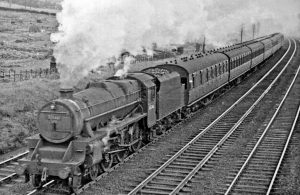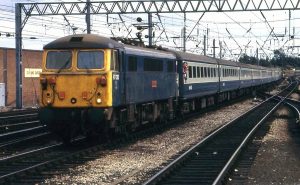West Coast Mainline
The West Coast Main Line, a sprawling network of rails that spans the length and breadth of the United Kingdom, is not just a passage for trains but a tapestry woven with threads of history, innovation, and progress. This iconic railway corridor has witnessed the evolution of transportation, played a pivotal role in shaping communities, and facilitated the movement of people and goods for over a century. In this article, we delve into the captivating history of the West Coast Main Line, tracing its origins, development, and enduring significance.
Early Days and Visionaries
The origins of the West Coast Main Line can be traced back to the early 19th century when the concept of a rail network was still in its infancy. Engineers like George Stephenson, often referred to as the “Father of Railways,” were pioneering the construction of steam-powered locomotives and laying the groundwork for a transportation revolution. The West Coast Main Line began its journey in 1837, with the opening of the London and Birmingham Railway, connecting the two bustling cities and marking a crucial milestone in the evolution of rail travel.
The Visionaries Behind the Line:
- Robert Stephenson: The son of George Stephenson, Robert played a vital role in the design and construction of the railway’s infrastructure, ensuring that the line could handle the rapidly increasing traffic.
- Joseph Locke: A prominent civil engineer, Locke contributed to the design and construction of the Grand Junction Railway, a crucial section of the West Coast Main Line.
- George Parker Bidder: Known as “Calculating Boy,” Bidder was a child prodigy who contributed to surveying and estimating the line’s construction costs accurately.
Expansion and Growth
The initial success of the London and Birmingham Railway sparked a wave of expansion, leading to the formation of the London and North Western Railway (LNWR) in 1846. Under the guidance of railway pioneers like George Hudson and E.W. Watkin, the LNWR expanded the West Coast Main Line northward, connecting cities such as Manchester, Liverpool, and Glasgow. This expansion not only facilitated the movement of people but also transformed the transport of goods, enabling the efficient distribution of raw materials and manufactured products across the country.
The “Race to the North”
The late 19th century witnessed the famous “Race to the North,” a competition between railway companies to provide the fastest and most luxurious service between London and Scotland. The West Coast Main Line became the stage for this dramatic contest, with companies like the LNWR and the Caledonian Railway vying to outdo each other. The rivalry led to the introduction of faster and more luxurious trains, culminating in the creation of the iconic “Flying Scotsman” service, which continues to capture imaginations even today.
Electric Revolution and Modernization
The turn of the 20th century brought a revolution in rail technology with the electrification of the West Coast Main Line. In 1928, the line between London and Watford was electrified, marking the first step in the transformation of the rail network. Electrification drastically reduced travel times and enhanced efficiency, laying the groundwork for high-speed rail travel in the UK.
The line continued to evolve with the introduction of more advanced locomotives, streamlined designs, and improved infrastructure. The 1960s saw the end of steam locomotives on the West Coast Main Line, replaced by the sleek and powerful electric and diesel trains that are still in use today.
Challenges and Modern-Day Significance
While the West Coast Main Line has weathered many storms, it has also faced challenges in the form of maintenance, capacity constraints, and the need for modernization. As the demand for rail travel grew in the 21st century, initiatives like the West Coast Route Modernisation program aimed to upgrade the line’s infrastructure and accommodate the needs of a modern society.
Looking Forward: High-Speed 2 (HS2)
The next chapter in the history of the West Coast Main Line is the ambitious High-Speed 2 (HS2) project. Envisioned as a new high-speed rail network connecting London to the Midlands and the North, HS2 aims to alleviate congestion on the existing network, provide faster travel times, and stimulate economic growth in the regions it serves. While HS2 represents a departure from the traditional West Coast Main Line, it also stands as a continuation of the line’s legacy of innovation and progress.
Conclusion
The West Coast Main Line is not merely a network of rails; it’s a testament to human ambition, ingenuity, and the desire for progress. From its humble beginnings as a link between London and Birmingham to its role in connecting major cities and shaping the very landscape of the United Kingdom, this historic railway corridor has left an indelible mark on the nation’s history. As we journey through time along its tracks, we are reminded of the countless visionaries, engineers, and communities that have contributed to its enduring legacy. The West Coast Main Line is a living testament to the power of railways to transform societies, economies, and lives.



1 comment